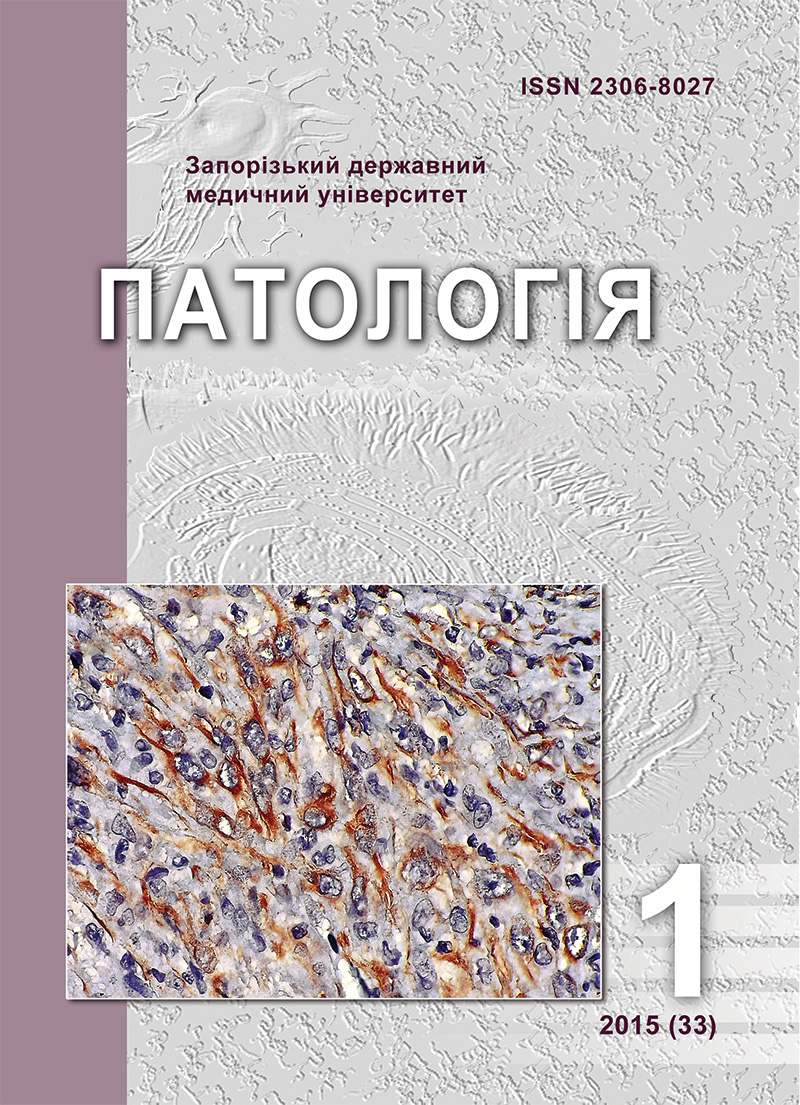Specific cell’s nuclei DNA content and cellular heterogeneity of colon adenocarcinoma
DOI:
https://doi.org/10.14739/2310-1237.2015.1.42878Keywords:
Large Intestine, Adenocarcinoma, DNA, Genetic HeterogeneityAbstract
Definition of properties and fine pathogenesis mechanisms is a direct condition for improving the effectiveness of the fight against cancer, including colon cancer.
Aim. In order to assess the cellular composition heterogeneity of colon adenocarcinoma (AC) on the specific DNA content in the cells’ nuclei 141 biopsies were studied using histological, histochemical, morphological, densitometric and mathematical methods.
Methods and results. It was established that in AC with grade increase (G) there is an increase in the relative proportion of cells with nuclei which are most appropriate for functional activity and vice versa.
Conclusion. This suggests that AC cellular heterogeneity is not linear, and the function approximates to the parabolic one.
References
Avtandilov, G. G. (2006). Diagnosticheskaya medicinskaya ploidometriya [Diagnostic medical ploidometry]. Moscow: Medicina. [in Russian].
Hrabovyi, O.M., Antoniuk, S. A, Vorobiei, Ye. A. (2013). Vmist nukleinovykh kyslot u yadrakh klityn epitelialnykh pukhlyn tovstoi kyshky [Nucleic acids contents in the colon epithelial tumor cells nuclei]. Ukrainskyi morfolohichnyi almanakh, 11(1), 73–76. [in Ukrainian].
Luppa, Kh. (1980) Osnovy khistokhimii [Basic histochemistry]. Moscow: Myr. [in Russian].
Tashke, K. (1980). Vvedenie v kolichestvennuyu cito-gistologicheskuyu morfologiyu. [Introduction to quantitative cyto-histological morphology]. Moscow. [in Russian].
Davoli, T., & de Lange, T. (2011). The Causes and Consequences of Polyploidy in Normal Development and Cancer. Ann. Rev. Cell Dev. Biol., 27, 585–610. doi: 10.1146/annurev-cellbio-092910-154234.
Greaves, M., & Maley, C. C. (2012) Clonal evolution in cancer. Nature, 481(7381), 306–313. doi: 10.1038/nature10762.
Holland, A., & Cleveland, D. (2012) Losing balance: the origin and impact of aneuploidy in cancer. EMBO, 13, 501–514. doi: 10.1038/embor.2012.55.
Melo, F. D. S. E., Vermeulen, L., Fessler, E., & Medema, J. P. (2013) Cancer heterogeneity – a multifaceted view. EMBO, 14(8), 686–695. doi: 10.1038/embor.2013.92.
Park, S., Choi, E., Jang, Y., Hong, S. H., Kim, I. H., & Chang, D. K. (2011). Effects of Chromosomal Polyploidy on Survival of Colon Cancer Cells. Korean J. Gastroenterol., 57(3), 150–157. doi: 10.4166/2011.57.3.150.
Visvader, J. E. (2011) Cells of origin in cancer. Nature, 469(7330), 314–322. doi: 10.1038/nature09781.
Downloads
How to Cite
Issue
Section
License
Authors who publish with this journal agree to the following terms:
Authors retain copyright and grant the journal right of first publication with the work simultaneously licensed under a Creative Commons Attribution License that allows others to share the work with an acknowledgement of the work's authorship and initial publication in this journal.

Authors are able to enter into separate, additional contractual arrangements for the non-exclusive distribution of the journal's published version of the work (e.g., post it to an institutional repository or publish it in a book), with an acknowledgement of its initial publication in this journal.
Authors are permitted and encouraged to post their work online (e.g., in institutional repositories or on their website) prior to and during the submission process, as it can lead to productive exchanges, as well as earlier and greater citation of published work (SeeThe Effect of Open Access).

